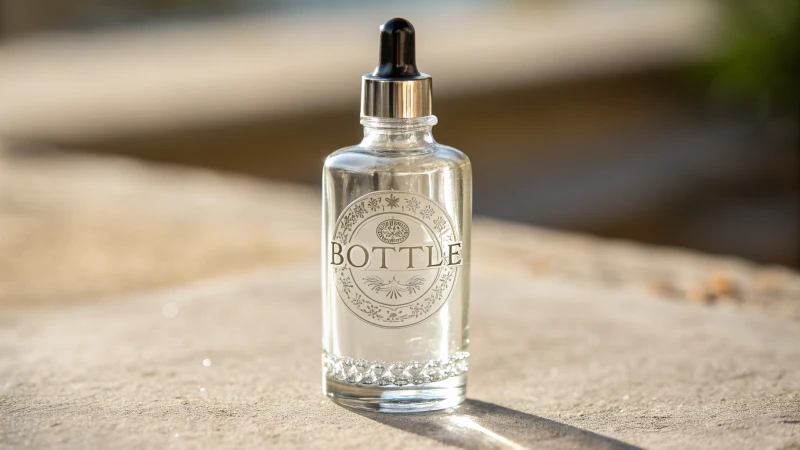
Imagine your brand’s logo elegantly embossed on a glass dropper bottle, turning an ordinary package into a statement piece. It’s not just about aesthetics; it’s a powerful branding tool.
To integrate logo embossing into glass drop bottle mold designs, incorporate the logo directly into the mold. Use specialized techniques for precision and durability, enhancing your brand without compromising the bottle’s functionality or beauty.
When I first started exploring logo embossing for my glass packaging, I realized how much it could amplify my brand’s presence. Integrating this feature isn’t as daunting as it seems if you pay attention to both design and production details. Understanding the nuances of embossing helped me seamlessly enhance my products’ appeal. Here’s how I did it.
Logo embossing enhances brand identity on glass bottles.Verdadero
Embossed logos make packaging more visually appealing, boosting brand identity.
Embossing logos on glass bottles reduces their durability.Falso
Properly embossed logos do not compromise the bottle's durability or function.
How Do You Design an Embossed Logo Mold?
Creating an embossed logo mold isn’t just about precision—it’s an art form that blends creativity with technical expertise. Dive into the world of brand identity and craft a stunning impression on your products.
To design an embossed logo mold, begin by seamlessly integrating the logo into the mold design, choose durable materials, strategically place the logo, and ensure the glass quality remains intact. These steps guarantee both aesthetic appeal and functionality.
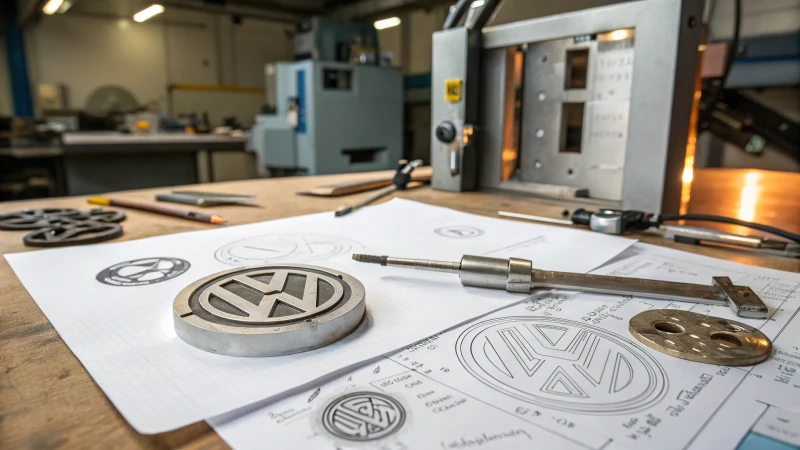
Understanding the Basics of Embossing
Embossing feels like a dance between artistry and engineering. Imagine taking a flat logo and transforming it into a tactile experience on glass—it’s magical. I remember the first time I saw my logo rise from the glass; it was like seeing my brand breathe life. To achieve this, you must meticulously integrate your logo design1 into the mold. Precision is key to ensure it beautifully translates onto your glass product.
Selecting Appropriate Materials
The choice of materials for your mold is as critical as choosing the right fabric for a designer dress. Hardened steel and aluminum are the go-to materials—they’re like the unsung heroes in the embossing process. Their durability and heat resistance are paramount because they withstand the intense pressures of glass forming, ensuring your mold lasts through countless creations.
| Material | Durability | Heat Resistance |
|---|---|---|
| Hardened Steel | High | Excellent |
| Aluminio | Moderate | Good |
Strategic Placement of Logos
Placement of the logo is like choosing the perfect spot for a picture in a gallery—it needs to be visible yet harmonious. On my first project, I learned that placing a logo on the side of a bottle enhances visibility without disturbing its elegance. Near the neck offers a minimalist touch but demands precision to avoid any fit issues with the dropper.
- Side of Bottle: Best for visibility without altering shape.
- Near the Neck: Elegant, requires careful precision.
- Bottom or Base: Great for brand recognition, but stability checks are crucial.
Maintaining Glass Quality & Functionality
Embossing can add character but can also alter glass thickness. I learned early on that weight balance is crucial—embossed areas should not tip the scales too much. And then there’s the dropper fit; ensuring it remains unaffected by embossing is essential to prevent leaks and maintain that perfect seal.
- Weight Balance: Ensure embossed areas do not overly increase weight.
- Dropper Fit: Ensure embossing doesn’t interfere with the dropper mechanism. This is crucial for preventing leaks and maintaining
a secure seal.
Precision in Production
Designing and testing molds is akin to rehearsing before opening night—everything must be just right. Regular quality control2 checks ensure your logos remain sharp and clear, maintaining their durability across batches.
Cost and Long-term Benefits
While the initial cost for specialized molds can seem daunting, think of it as an investment in your brand’s future. Just like how an exquisite piece of jewelry adds value over time, so does branding through embossing. It’s a one-time expense that can lead to improved ROI by boosting your brand recognition and appeal.
| Consideration | Initial Cost | Long-term Benefit |
|---|---|---|
| Mold Creation | High | Brand Value |
| Production Quality | Critical | Market Appeal |
In essence, crafting an embossed logo mold is about merging creativity with craftsmanship, ensuring that each bottle not only represents your brand but also tells its story.
Embossing involves creating raised designs on glass surfaces.Verdadero
Embossing is a technique for raising designs on surfaces like glass.
Aluminum molds offer excellent heat resistance for embossing.Falso
Aluminum has good, not excellent, heat resistance compared to steel.
How Does Logo Placement Affect Glass Bottle Design?
Ever wondered why some glass bottles catch your eye more than others? The secret often lies in the subtle art of logo placement.
Logo placement on glass bottles is crucial for effective branding as it impacts both visibility and aesthetic appeal. Strategic positions, like the side or near the neck, enhance brand recognition while maintaining functionality.
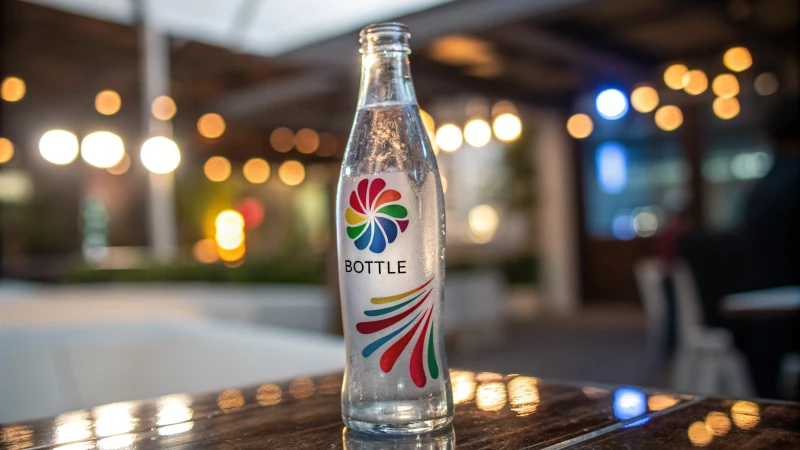
The Significance of Logo Placement
When I first started delving into glass bottle design, the importance of logo placement seemed like a minor detail. But then I realized it’s a game-changer in how a brand is perceived. It doesn’t just alter the look—it defines the interaction between the consumer and the product.
Table: Common Logo Placement Areas
| Placement Area | Advantages | Considerations |
|---|---|---|
| Side | High visibility, easy to emboss | Must not distort bottle shape |
| Near Neck | Elegant look, minimalistic design | Requires precision in mold adjustments |
| Bottom/Base | Subtle branding, additional information | Avoids compromising bottle stability |
Aesthetic Impacts
I remember when I chose to place a logo on the side of a bottle—it was an instant hit! The brand recognition soared because consumers could spot it immediately. This placement is perfect for brands that want to make a bold impression without hindering functionality. On the other hand, placing logos near the neck appeals to those who prefer a subtle aesthetic3, adding a touch of elegance to the design.
Functional Considerations
Functionality is another factor I had to consider. For example, embossing a logo near the neck requires precision in mold design4. You don’t want it interfering with a dropper’s fit or the bottle’s sealing.
Table: Functional Considerations Based on Logo Placement
| Aspect | Side Placement | Neck Placement |
|---|---|---|
| Dropper Fit | No interference | Requires precise adjustment |
| Weight Distribution | Even distribution | Potential for weight imbalance |
Consumer Perception
I’ve seen firsthand how strategic logo placement can elevate a product’s perceived quality and prestige. A well-placed logo can exude sophistication and attention to detail. It’s fascinating how embossing can boost consumer engagement5, potentially increasing sales.
Ultimately, understanding logo placement’s influence on brand identity is vital for designing impactful glass bottles. It’s all about balancing aesthetic appeal with functionality to create designs that resonate deeply with consumers.
Side placement of logos enhances brand recognition.Verdadero
Logos on the side are immediately visible, boosting recognition.
Logos at the bottom improve bottle stability.Falso
Bottom placement avoids stability issues but doesn't enhance it.
What Are the Challenges in Maintaining Glass Quality with Embossing?
Remember the first time you saw a beautifully embossed glass bottle and thought, "Wow, that’s classy?" There’s a world of detail behind that elegance.
Navigating the embossing process while maintaining glass quality is a balancing act. It involves tackling thickness variations, ensuring structural integrity, and achieving precise mold designs, all while strategically placing logos to enhance aesthetic and functional qualities.
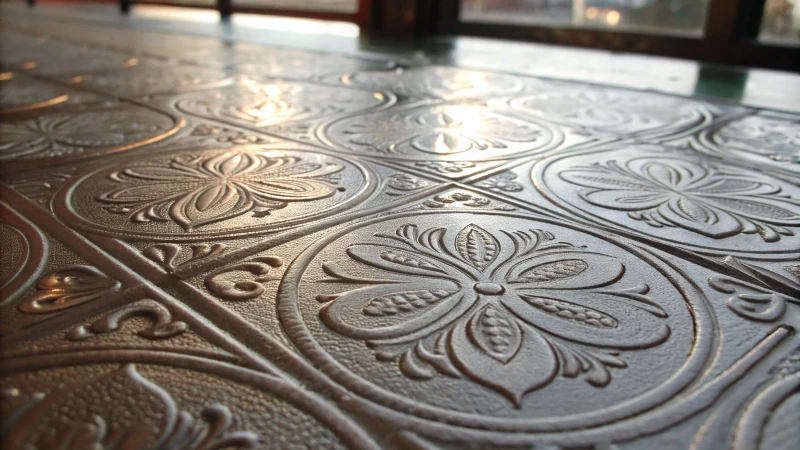
Understanding Glass Thickness Variations
I remember the first time I got my hands on a glass bottle with embossing. It was stunning, but I quickly learned that embossing can alter the thickness of the glass surface in ways you wouldn’t expect. When you add a logo, some areas get thicker, and others thinner, which might throw off the bottle’s balance. This can affect not only how it looks but also how it feels when you pick it up.
- Consideration: You have to tweak the mold design so these changes don’t mess with the product’s usability.
- Solution: Computer-aided design (CAD) tools can simulate how these thickness changes will play out, helping us foresee potential issues.
| Factor | Challenge | Solution |
|---|---|---|
| Thickness Variation | Uneven weight distribution | CAD simulations |
Structural Integrity and Mold Precision
Ensuring that those embossed sections don’t weaken the glass is crucial. I learned early on that precise mold design is everything if you want a clear, durable image without losing strength.
- Tooling Materials: Using top-notch materials like hardened steel is essential because they can take the heat—literally—of the molding process.
- Precision Techniques: Advanced laser engraving technology6 offers better control over intricate designs than traditional methods. It’s like having a sculptor at your disposal, crafting each detail with precision.
| Factor | Challenge | Solution |
|---|---|---|
| Structural Integrity | Potential weakening of glass structure | High-precision mold design |
Strategic Logo Placement
Where you put that embossed logo can make or break your design. I once had a logo placed too close to the base, and it affected the product’s stability. It taught me that careful consideration is necessary.
- Placement Options:
- Side Placement: Offers high visibility but requires careful balancing with other design elements.
- Base Placement: Enhances brand recognition but can affect product stability if not executed correctly.
Quality Control Measures
Quality control is like the unsung hero in this process. It’s all about rigorous checks to make sure nothing slips through the cracks.
- Testing Frequency: More frequent testing during initial production runs can catch potential defects early.
- Visual Inspections: These ensure that each embossed logo is clear and consistent across all batches.
By embracing these challenges head-on, we can bring embossing into our glass products without losing quality or visual appeal. It’s a journey of understanding and overcoming these hurdles, essential for anyone in glass production7 or design. These efforts ensure our branding enhances, rather than hinders, the product’s performance.
Embossing affects glass thickness consistency.Verdadero
Embossing changes the thickness of glass, impacting balance and weight distribution.
Laser engraving weakens glass structure.Falso
Laser engraving allows for precise designs without compromising structural integrity.
How Can Future Trends Enhance Logo Embossing Techniques?
I’ve always marveled at how a simple embossed logo can transform a product from ordinary to extraordinary, blending artistry with innovation.
Future trends in logo embossing, like laser engraving and eco-friendly materials, are set to revolutionize the process by enabling intricate designs and sustainable options.
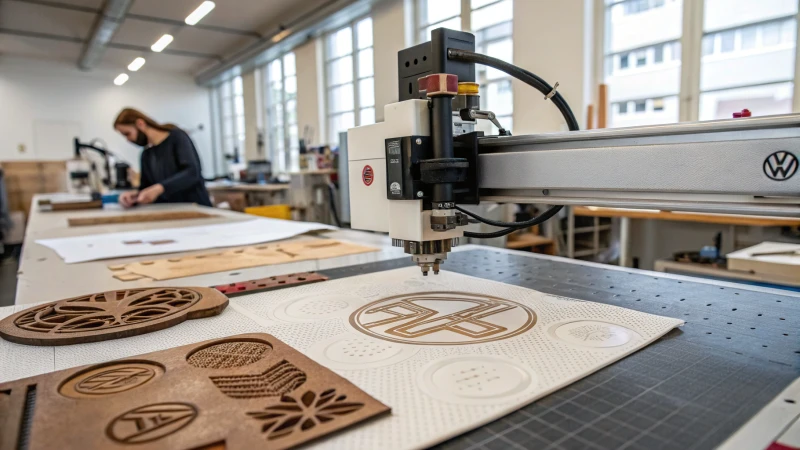
Leveraging Advanced Laser Technology
I remember the first time I saw a laser-engraved logo; it was mesmerizing. The precision and detail were unlike anything I’d seen before, making traditional methods seem almost archaic. With laser technology8, we can achieve ultra-fine detailing that was once unimaginable, all without slowing down production or ramping up costs. It’s like having the best of both worlds—speed and sophistication.
Eco-Friendly Embossing Solutions
As someone who’s passionate about the environment, I’ve always been on the lookout for ways to make my work more sustainable. That’s why I find the shift towards eco-friendly embossing so exciting. Brands are now exploring biodegradable materials9 that maintain quality while being kind to our planet. This isn’t just good for the Earth; it’s a smart move for any brand wanting to improve its reputation in a market that increasingly values sustainability.
Integration of Smart Materials
Imagine a logo that changes or interacts with you—sounds futuristic, right? Well, that’s the potential of smart materials10 in logo embossing. These materials can adapt to environmental changes, creating interactive designs that can engage customers in new ways. It’s like bringing a logo to life!
Personalized and Customizable Embossing
We all love things that feel tailor-made for us, and that’s where personalized embossing comes into play. With emerging technologies, we can now customize embossed logos in real-time, adapting them to consumer preferences through mass customization11. This creates a unique connection between a brand and its audience, making every product feel special.
Role of Artificial Intelligence in Design
AI is a game-changer in so many fields, and logo design is no exception. AI tools can analyze trends and generate designs that resonate deeply with audiences. I find this particularly thrilling because it allows for a level of innovation and appeal that was previously out of reach with traditional methods.
Table: Comparative Analysis of Traditional vs. Future Embossing Techniques
| Aspect | Traditional Techniques | Future Trends |
|---|---|---|
| Precision | Limited | High with laser |
| Cost | High | Cost-effective |
| Environmental Impact | High | Reduced with eco-materials |
| Customization | Minimal | Extensive with AI and smart tech |
Laser technology allows ultra-fine detailing in embossing.Verdadero
Laser technology enhances precision and detail in logo embossing.
Traditional embossing methods are more cost-effective than future trends.Falso
Future trends like lasers reduce costs compared to traditional methods.
Conclusión
Integrating logo embossing into glass dropper bottle designs enhances branding while maintaining functionality. Key steps include precise mold design, strategic logo placement, and ensuring glass quality.
-
Explore effective techniques for designing logos specifically for embossing processes. ↩
-
Understand the importance of quality control in ensuring consistent and high-quality embossed logos on glass products. ↩
-
Discover how minimalist logo placements can create a sleek and modern brand image. ↩
-
Learn why precise mold design is critical for successful logo embossing. ↩
-
Understand how strategic branding influences consumer purchasing decisions. ↩
-
Laser engraving provides greater precision and detail, enhancing the quality of embossed designs. ↩
-
Explore proven techniques in glass manufacturing to ensure high-quality outcomes. ↩
-
Explore how laser engraving technology enhances precision and design flexibility in logo embossing. ↩
-
Discover eco-friendly materials that align with sustainability efforts in embossing. ↩
-
Learn about the use of smart materials in creating interactive and dynamic logo designs. ↩
-
Understand how mass customization can offer personalized branding through embossing. ↩



